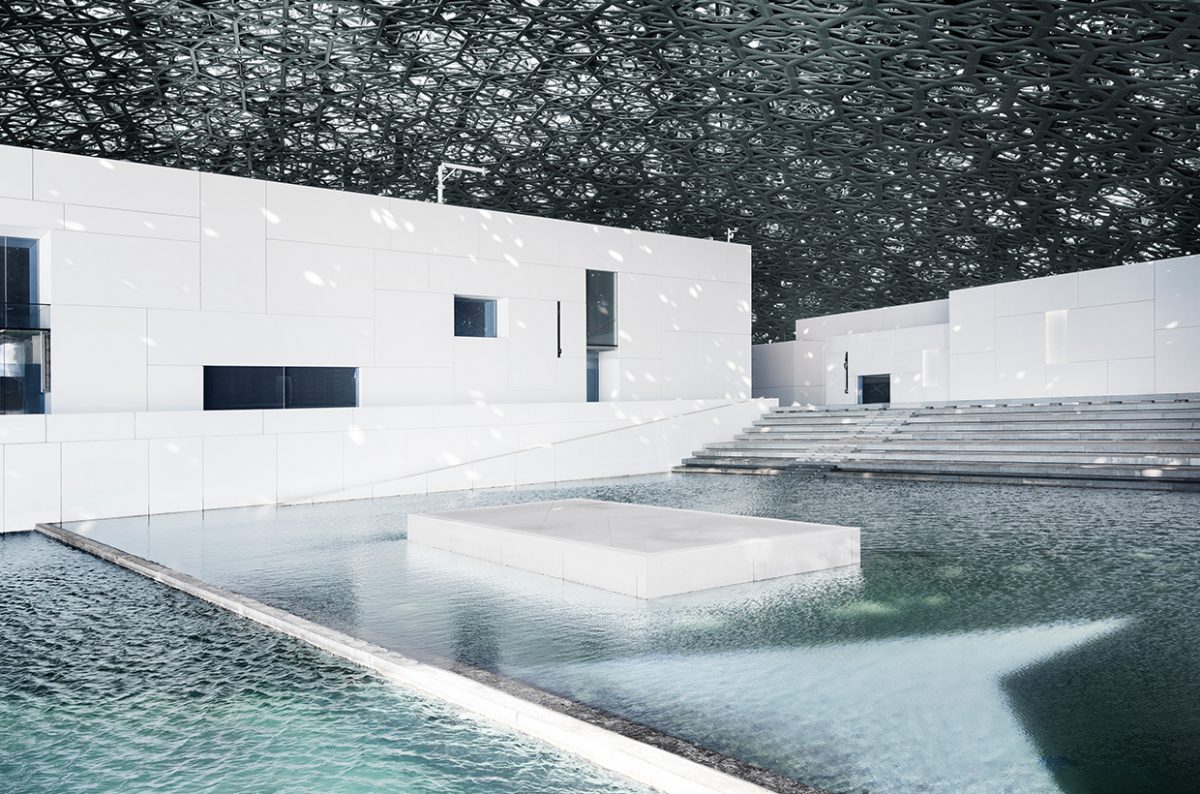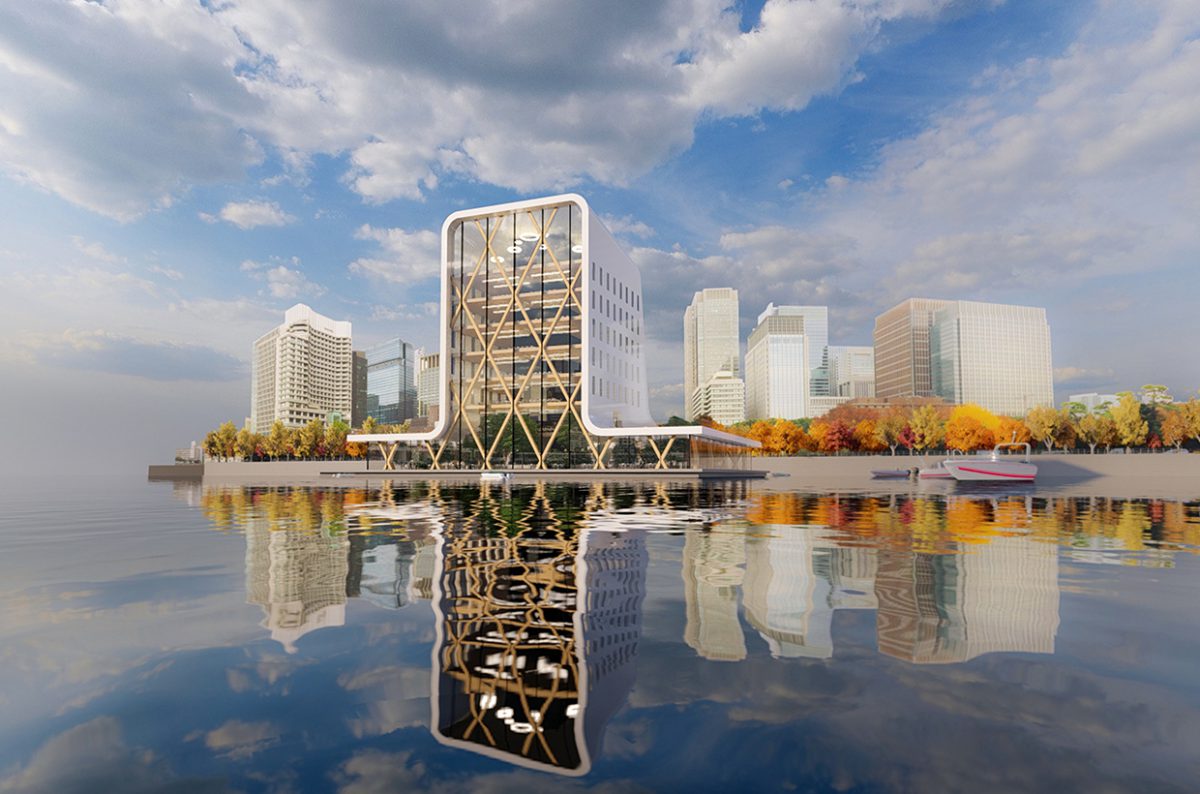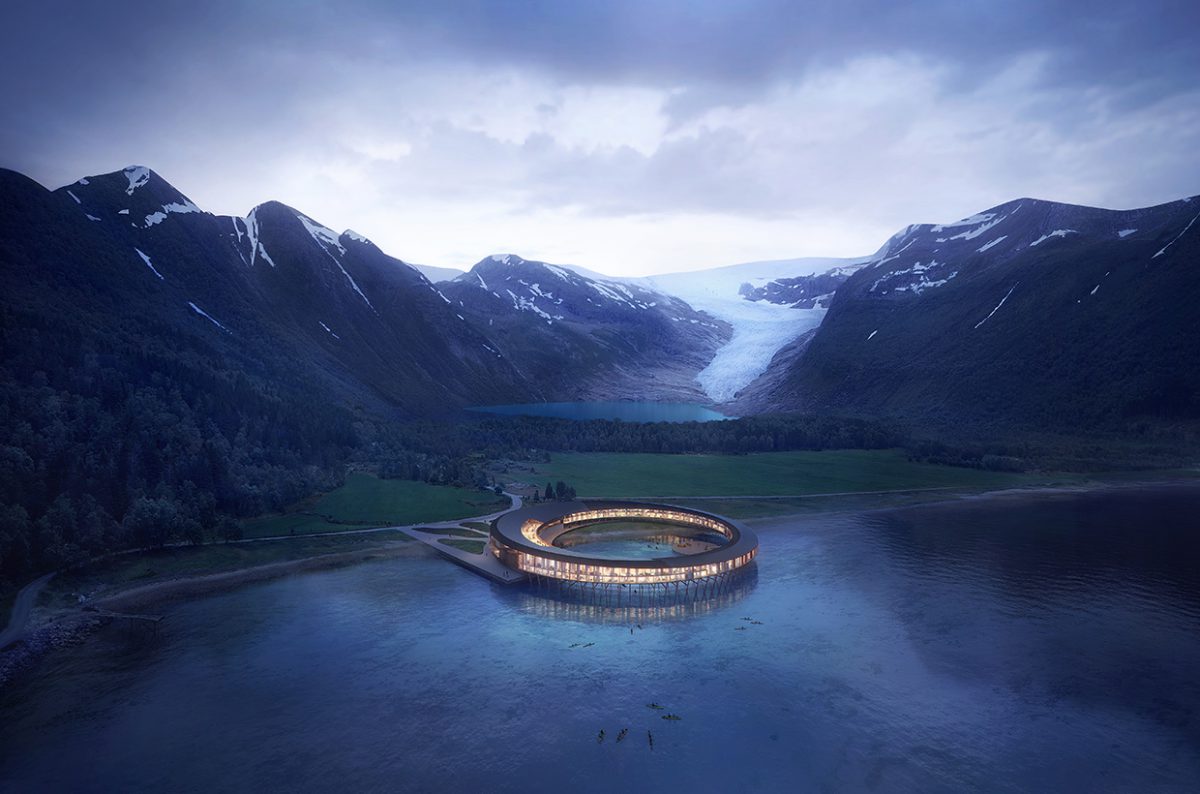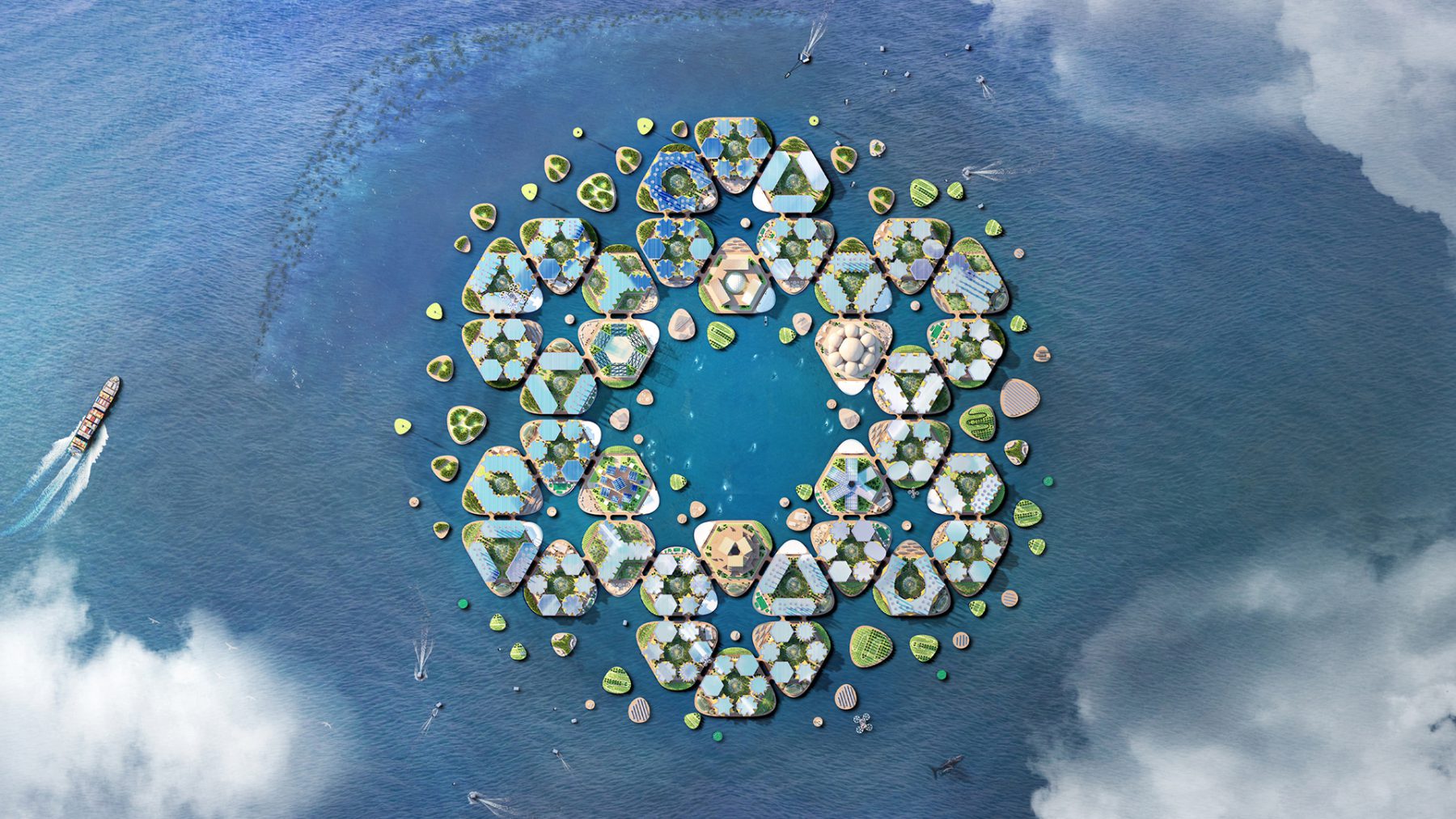Wasser Architektur by Silke Bender | 4th June, 2021 | Personalities
Two-thirds of our planet is covered by water. The growing challenges of limited land and an ever-growing population are inspiring these forward-thinking architects to think about life on the water and develop floating hotels, golf courses, theaters, student accommodation and even entire cities.
The challenges our planet is currently facing have inspired leading architects to look into new possibilities for how to turn bodies of water into fascinating new development sites.
“I don’t see myself as an architect, but rather as a doctor for cities – and water is my medicine.” KOEN OLTHUIS, WATERSTUDIO
The reason Dutch architect Koen Olthuis has become a pioneer of aquatic architecture is all to do with water. “I always joke that we’re a fake country. Half of the Netherlands is actually below sea level. We’ve wrested our country from the waves, and all our urban planning is shaped by this struggle with water.” At some point the architect, who was born in 1971 and is based in The Hague, thought: “Why don’t we stop fighting it and look at bodies of water as new development sites.”
Two-thirds of the Earth’s surface is covered by water today, with many of the word’s largest cities located on coastlines. If sea levels continue to rise due to climate change, the remaining land will become even more crowded. By the year 2050, the world’s population is predicted to rise to roughly 9.7 billion, 70 percent of whom will be living in major urban centers. Up until now most of the efforts to open up new locations for development have been limited to land reclamation projects: Odaiba Island in Tokyo, the South Korean smart city of Songdo, Hong Kong’s huge, new West Kowloon cultural district, which includes an opera building, art museum and concert halls – and last, but not least: the Palm Islands, a series of artificial peninsulas in Dubai. Such extreme interventions in the environment are usually ecological catastrophes – both on land, where the sand is taken from, and below the waterline, where it is deposited.
“We have to change our thinking: Green is good, but blue is better,” says Olthuis. Being the grandson of an architect on his father’s side and the grandson of a shipbuilder on his mother’s side, he drew on both traditions and concluded: A floating building is better than a static one. “I don’t really see myself as an architect, but rather as a doctor for cities,” he says. “And water is my medicine.” Since founding the Waterstudio architecture firm in 2003, he and his team have constructed just shy of 300 floating houses and office buildings, most of them in the Netherlands. The BBC aptly dubbed him “the floating Dutchman.” His team is also designing floating villas, villages and golf courses in the Maldives, and entire neighborhoods in the Netherlands.
Few of his ground-breaking ideas have made it past the design stage so far, but that is about to change: The Arkup is a cross between a yacht and a house, a zero-emission luxury villa, powered by solar energy and equipped with its own waste management, rainwater collection and water treatment systems. It’s even designed to withstand hurricanes and floods, because it will rise and fall with the tides. The Arkup has just been sold for 5.5 million dollars, which is a lot less than what most big yachts go for. Olthuis has also conceived the Sea Tree, a floating high-rise building designed to house wildlife and so improve the biodiversity and water quality in large conurbations. The first of these will be completed in the Chinese city of Kunming as early as this summer. The Parthenon – a kind of floating, permeable seawall that turns wave energy into electricity – will also soon start operating off the Norwegian coast.
But Olthuis doesn’t just design for the planet’s more affluent communities: Floating houses could also be the solution for the expanding wet slums, as they are referred to – slums located by the water in some African and Asian coastal cities. His Floating City Apps, which resemble shipping containers, could provide much-needed infrastructure: accommodation, water treatment facilities, mobile schools or spaces for electricity generation and food production. Six of the floating buildings have already been constructed. During the current pandemic, they are being used as meeting points for the crews of container ships.
Reportedly, the first word uttered by the young son of Danish architect Bjarke Ingels and his Spanish wife Rut Otero was “agua” (water). Ingels and his firm BIG (Bjarke Ingels Group) are among the industry’s big hitters. His current projects include Google’s new headquarters in Silicon Valley, museums and cultural centers from Bordeaux to Mexico, banking towers in Frankfurt and an eco-friendly waste incineration plant in Denmark. He has also recently moved into his new home in Copenhagen’s harbor: a roughly 38-meter long, decommissioned ferry. Every porthole and window gives onto the water. The ship provides Ingels with an opportunity to apply the principles he advocates – on a smaller scale – in his own life. “Floating houses are the most resilient architectural structures,” he told Architectural Digest. “When sea levels rise, so do houseboats.” Ingels has dropped anchor in close proximity to the Urban Rigger project also conceived by him. The standardized floating containers serve as affordable accommodation for college students in Copenhagen.
His vision for Oceanix City, which he proposed to UN-Habitat in 2019 as a future urban planning solution, is even larger in scale. It’s designed to be an actual floating city made up of sustainable, modular structures for up to 10,000 people – a sort of blueprint for the first maritime metropolis. The modules are moveable and can be added to, allowing neighborhoods to grow into villages, or even cities.
Oceanix City developments could be located off larger coastal towns and also towed to a different location if a natural disaster were to occur. For additional safety, all the modules are designed to withstand floods, tsunamis and even category 5 hurricanes. Oceanix City is also designed to be a zero-emission development and would be powered by clean wave and solar energy. Cutting-edge steam distillation technology, atmospheric water generators and rain collection systems would provide fresh drinking water. Closed-loop recycling would ensure zero waste production and prevent water wastage.
Located in Norway – just inside the Arctic Circle where the melting polar ice sheet is causing sea levels to rise – the Svart Hotel is scheduled to open before the end of the year. Designed by award-winning Norwegian architecture firm Snøhetta, it is billed as the world’s first hotel to be a net generator of energy. Looking like a life ring on wooden columns, it protrudes into the fjord at the foot of the darkblue Svartisen glacier, which it is named after, and can only be reached by boat. The circular structure that rises above the water was chosen in order to maximize the time the photovoltaic cells on its roof can be used to collect solar energy. And, of course, to provide hotel guests with panoramic views of the magnificent glacier and the spectacular northern lights. The aim is for the hotel to be completely independent of the electricity grid and operate self-sufficiently within five years of opening. The hotel has its own greenhouses, and an energy-neutral shuttle boat runs to and from the nearby city of Bodø.
“The Louvre Abu Dhabi is one of the best pieces of work I’ve been privileged to build.“ JEAN NOUVEL
The desert capital of Abu Dhabi is rich in oil and sunshine, but it lacks sources of fresh water and rainwater too, of course, so precipitation is considered a gift from heaven. This is why water is the dominant architectural theme of the prestigious Louvre Abu Dhabi building, completed by Jean Nouvel in 2017. The structure, which Nouvel himself has called one of his best, exudes an awe-inspiring spiritual energy thanks to the sophisticated interplay of light, shadow and water. Its eye-catching, low-lying dome is 180 meters in diameter and seems to float above the coastal waters of the Gulf. The delicate, multi-layered structure is reminiscent of Arab mosaics and consists of 8,000 metal stars.
When sunlight falls through the dome, it is reflected onto the walls and the surfaces of the water, creating continuous optical showers of light. The building could be even better if it was actually floating, says Koen Olthuis. A mobile museum of art and culture would be a game-changer in terms of promoting a sharing economy approach. However, the region may soon get its first floating museum after all. The Gulf state of Qatar has already asked Olthuis to come up with a design for one, but Waterstudio will first be completing a slightly smaller project: the L’île O, a floating theater building, is scheduled to open in the French city of Lyon in 2022.






